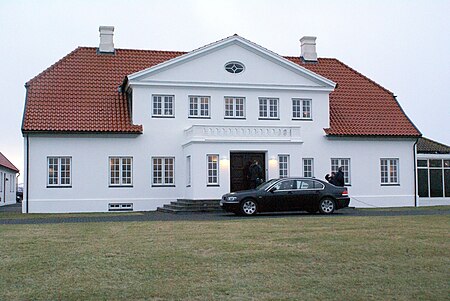P3P
| |||||||||||||||||||||||
Read other articles:

American inventor, researcher, and mystic For the Swiss Olympic biathlete, see Marcel Vogel (biathlete). This article needs additional citations for verification. Please help improve this article by adding citations to reliable sources. Unsourced material may be challenged and removed.Find sources: Marcel Vogel – news · newspapers · books · scholar · JSTOR (August 2013) (Learn how and when to remove this message) Marcel VogelBorn(1917-04-14)April 14, 1917…

Place in Sofala Province, MozambiqueBeiraBeira in 2000BeiraLocation of Beira in MozambiqueShow map of MozambiqueBeiraBeira (Africa)Show map of AfricaCoordinates: 19°50′S 34°51′E / 19.833°S 34.850°E / -19.833; 34.850Country MozambiqueProvinceSofala ProvinceFounded1887City Status1907Government • MayorAlbano Carige[1]Area • Total633 km2 (244 sq mi)Elevation14 m (46 ft)Population (2017 census) •…

1979 war film This article needs additional citations for verification. Please help improve this article by adding citations to reliable sources. Unsourced material may be challenged and removed.Find sources: Breakthrough 1979 film – news · newspapers · books · scholar · JSTOR (June 2019) (Learn how and when to remove this message) BreakthroughDirected byAndrew V. McLaglenWritten byPeter Berneis / Tony WilliamsonProduced byWolf C. HartwigHerbert Luko…

Patio Hotels GroupCompany typePrivateIndustryHotelsFounded1983HeadquartersAberdeen, United KingdomNumber of locations6 (at peak)Area servedScotland, France, IsraelWebsitepatiohotels.com The Patio Hotels Group was a British hotel chain established in 1983 with hotels in Europe and Israel.[1] History The first three hotels were built in France in the 1980s followed by the Patio Eilat Resort Hotel in Israel. Two hotels were later opened in Scotland – one in Clydebank (completed in 1990) a…

У Вікіпедії є статті про інші значення цього терміна: Наварра (значення). Наварра ісп. Comunidad Foral de Navarra баск. Nafarroako Foru Erkidegoa Герб Наварри Прапор Наварри Столиця Памплона Країна Іспанія[1] Країна Іспанія Межує з: сусідні адмінодиниці Нова Аквітанія Країна Басків Ла…

Elementary school in the United StatesEdward W. Morley SchoolLocation77 Bretton Road West Hartford, Connecticut 06119United StatesCoordinates41°46′08″N 72°43′56″W / 41.7690°N 072.7323°W / 41.7690; -072.7323InformationSchool typeElementary SchoolMottoCharacter Builds Community.School districtWest Hartford Public SchoolsPrincipalRyan ClearyGradesK-5Number of students301 (2015–16)[1]Color(s)Blue and WhiteMascotMustang horseWebsiteOfficial School Website…

此條目可参照英語維基百科相應條目来扩充。 (2021年5月6日)若您熟悉来源语言和主题,请协助参考外语维基百科扩充条目。请勿直接提交机械翻译,也不要翻译不可靠、低品质内容。依版权协议,译文需在编辑摘要注明来源,或于讨论页顶部标记{{Translated page}}标签。 约翰斯顿环礁Kalama Atoll 美國本土外小島嶼 Johnston Atoll 旗幟颂歌:《星條旗》The Star-Spangled Banner約翰斯頓環礁地�…

Basic law of the Netherlands This article needs additional citations for verification. Please help improve this article by adding citations to reliable sources. Unsourced material may be challenged and removed.Find sources: Constitution of the Netherlands – news · newspapers · books · scholar · JSTOR (May 2019) (Learn how and when to remove this message) Constitution of the NetherlandsOverviewOriginal title(in Dutch) Grondwet voor het Koninkrijk der Neder…

2001 single by Enya Wild ChildSingle by Enyafrom the album A Day Without Rain B-side Isobella Midnight Blue Flora's Secret Song of the Sandman (Lullaby) Released19 March 2001 (2001-03-19)GenreNew-ageLength 3:48 (album version) 3:33 (radio edit/single version) LabelWEASongwriter(s) Enya Roma Ryan Producer(s)Nicky RyanEnya singles chronology Only Time (2000) Wild Child (2001) May It Be (2002) Music videoWild Child on YouTube Wild Child is a single by Irish singer-songwriter Enya. It…

Maghreb history book First page of a manuscript of Rawḍ al-Qirṭās.[1] Rawḍ al-Qirṭās (Arabic: روض القرطاس) short for Kitāb al-ānīs al-muṭrib bi-rawḍ al-qirṭās fī ākhbār mulūk al-maghrab wa tārīkh madīnah Fās (الأنيس المطرب بروض القرطاس في أخبار ملوك المغرب وتاريخ مدينة فاس, The Entertaining Companion Book in the Gardens of Pages from the Chronicle of the Kings of the Maghreb and the History of the…

Jupiter as seen by the Juno spacecraft (2016) The collision of comet 9P/Tempel and the Deep Impact probe (2005) Since 1958, NASA has overseen more than 1,000 uncrewed missions into Earth orbit or beyond.[1] It has both launched its own missions and provided funding for private-sector missions. A number of NASA missions, including the Explorers Program, Voyager program, and New Frontiers program, are ongoing. List of missions Explorers Program (1958–present) Explorer 1 satellite. Main a…

Argentine footballer Diego Latorre Latorre in 2015Personal informationFull name Diego Fernando LatorreDate of birth (1969-08-04) 4 August 1969 (age 54)Place of birth Buenos Aires, ArgentinaHeight 1.70 m (5 ft 7 in)[1]Position(s) Striker[1]MidfielderSenior career*Years Team Apps (Gls)1987–1992 Boca Juniors 119 (52)1992–1993 Fiorentina 2 (0)1993–1995 Tenerife 69 (15)1995–1996 Salamanca 22 (1)1996–1998 Boca Juniors 67 (23)1998–1999 Racing Club 29 (10)…

Patriarcado de Venecia Patriarchatus Venetiarum (en latín) Escudo Información generalRito romanoSufragánea(s) Adria-Rovigo, Belluno-Feltre, Chioggia, Concordia-Pordenone, Padova, Treviso, Verona, Vicenza, Vittorio VenetoFecha de erección 774 (como diócesis de Olivolo)Elevación a patriarcado 8 de octubre de 1451SedeCatedral Basílica Patriarcal Metropolitana Primada de San Marcos EvangelistaCiudad VeneciaDivisión administrativa Región eclesiástica de TrivénetoProvincia de VeneciaPaís I…

Water management project in New Mexico and Colorado San Juan–Chama ProjectHeron Lake, the main storage reservoir of the San Juan–Chama ProjectGeneral statisticsBegun1951Completed1976Dams and reservoirsHeronNambe FallsBlanco (diversion)Oso (diversion)Little Oso (diversion)OperationsStorage capacity403,343 acre⋅ft (0.497516 km3)Annual water yield110,000 acre⋅ft (0.14 km3)Land irrigated92,479 acres (37,425 ha)vte The San Juan–Chama Project is a U.S. Bureau of Recl…

Proklamasi Pendirian NegaraTionghoa: 开国大典, Pinyin: Kāiguó DàdiǎnRevisi 1967SenimanDong XiwenTahun1953 (asli); direvisi pada 1954 & 1967TipeMinyak di atas kanvasUkuran229 cm × 400 cm (90 in × 160 in)LokasiMuseum Nasional Tiongkok, Beijing Proklamasi Pendirian Negara Hanzi sederhana: 开国大典 Hanzi tradisional: 開國大典 Alih aksara Mandarin - Hanyu Pinyin: Kāiguó Dàdiǎn - Wade-Giles: K'ai1-kuo2 Ta4-tien3 Yue (Kantonis) - Roman…

American politician John W. MoonFrom 1893's The House of Representatives of the Fifty Third Congress by The Graphic Chicago.Member of the U.S. House of Representativesfrom Michigan's 9th districtIn officeMarch 4, 1893 – March 3, 1895Preceded byHarrison H. WheelerSucceeded byRoswell P. Bishop Personal detailsBorn(1836-01-18)January 18, 1836Wayne County, Michigan, U.S.DiedApril 5, 1898(1898-04-05) (aged 62)Muskegon, Michigan, U.S.Political partyRepublican John Wesley Mo…

هذه المقالة يتيمة إذ تصل إليها مقالات أخرى قليلة جدًا. فضلًا، ساعد بإضافة وصلة إليها في مقالات متعلقة بها. (يناير 2017) لجنة الجزاءات 2140 [1] ترصد لجنة مجلس الأمن المنشأة عملا بالقرار 2140 (2014) (فيما بعد “اللجنة”) تدابير الجزاءات التي فرضها مجلس الأمن. ومدت ولاية اللجنة في الفقر�…

Pemilihan umum Bupati Sumba Timur 20242020202927 November 2024Kandidat Peta persebaran suara Peta Provinsi NTT yang menyoroti Kabupaten Sumba Timur Bupati & Wakil Bupati petahanaKhristofel Praing & David Melo Wadu Bupati & Wakil Bupati terpilih Belum diketahui Pemilihan umum Bupati Sumba Timur 2024 dilaksanakan pada 27 November 2024 untuk memilih Bupati Sumba Timur periode 2024–2029.[1] Pemilihan Bupati Sumba Timur tahun tersebut akan diselenggarakan setelah Pemilihan umum …

Japanese architect (1931–2022) Arata IsozakiIsozaki in 2013Born(1931-07-23)23 July 1931[1]Ōita, JapanDied28 December 2022(2022-12-28) (aged 91)Naha, Okinawa Prefecture, Japan [2]NationalityJapaneseAlma materUniversity of Tokyo (1954 and 1961)OccupationArchitectSpouseAiko MiyawakiAwards1986 Royal Gold Medal2019 Pritzker Prize[3]BuildingsFestival Plaza at EXPO70Art Tower MitorLA’s Museum of Contemporary Art Arata Isozaki in 1996 Arata Isozaki (磯崎 新, Iso…

Cet article est une ébauche concernant l’Islande. Vous pouvez partager vos connaissances en l’améliorant (comment ?) selon les recommandations des projets correspondants. BessastaðirPrésentationDestination actuelle Résidence officielle du président d'IslandePropriétaire État islandaisLocalisationPays IslandeMunicipalité ÁlftanesCoordonnées 64° 06′ 21″ N, 21° 59′ 44″ O Géolocalisation sur la carte : Islande modifier - modifier le c…
